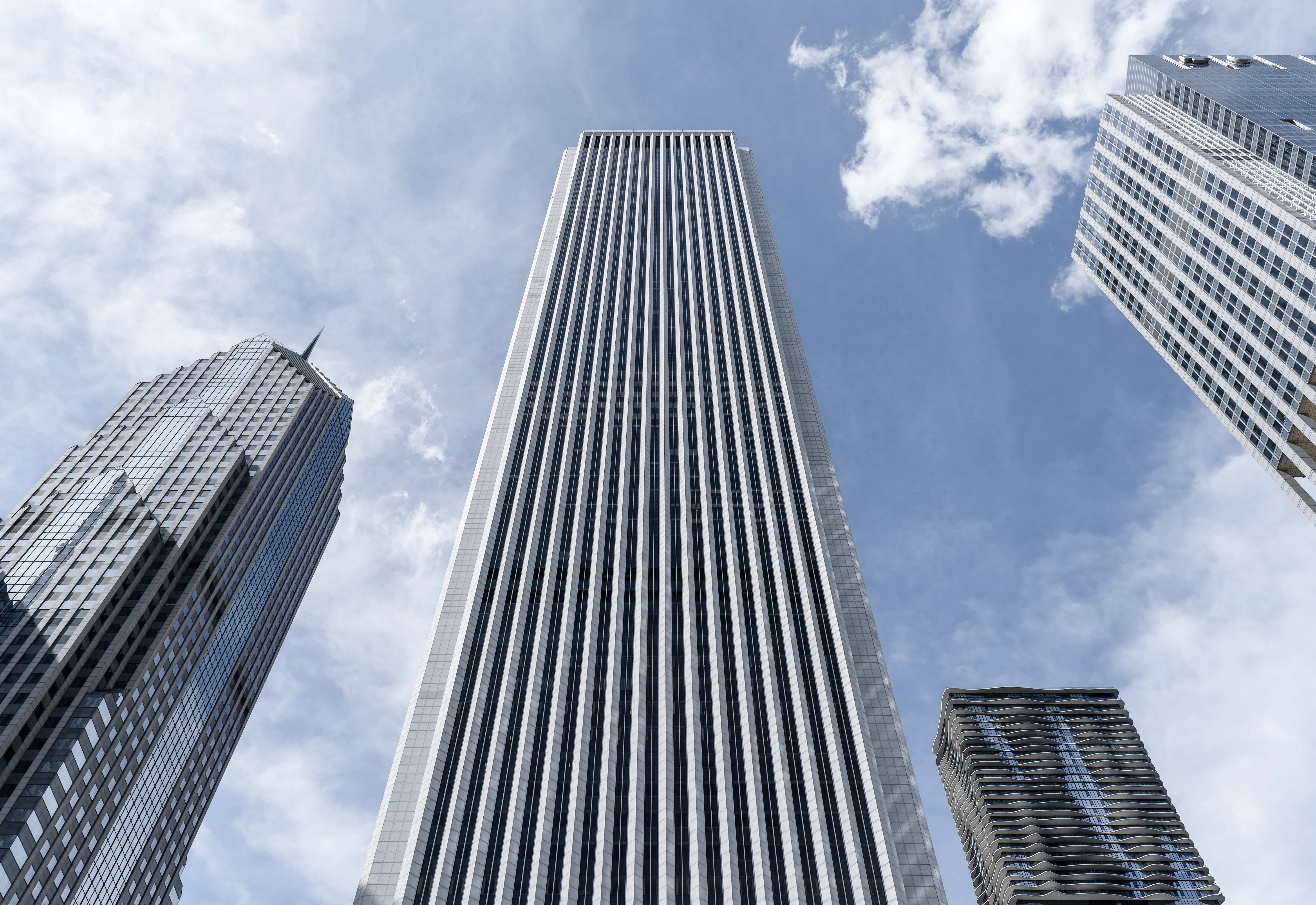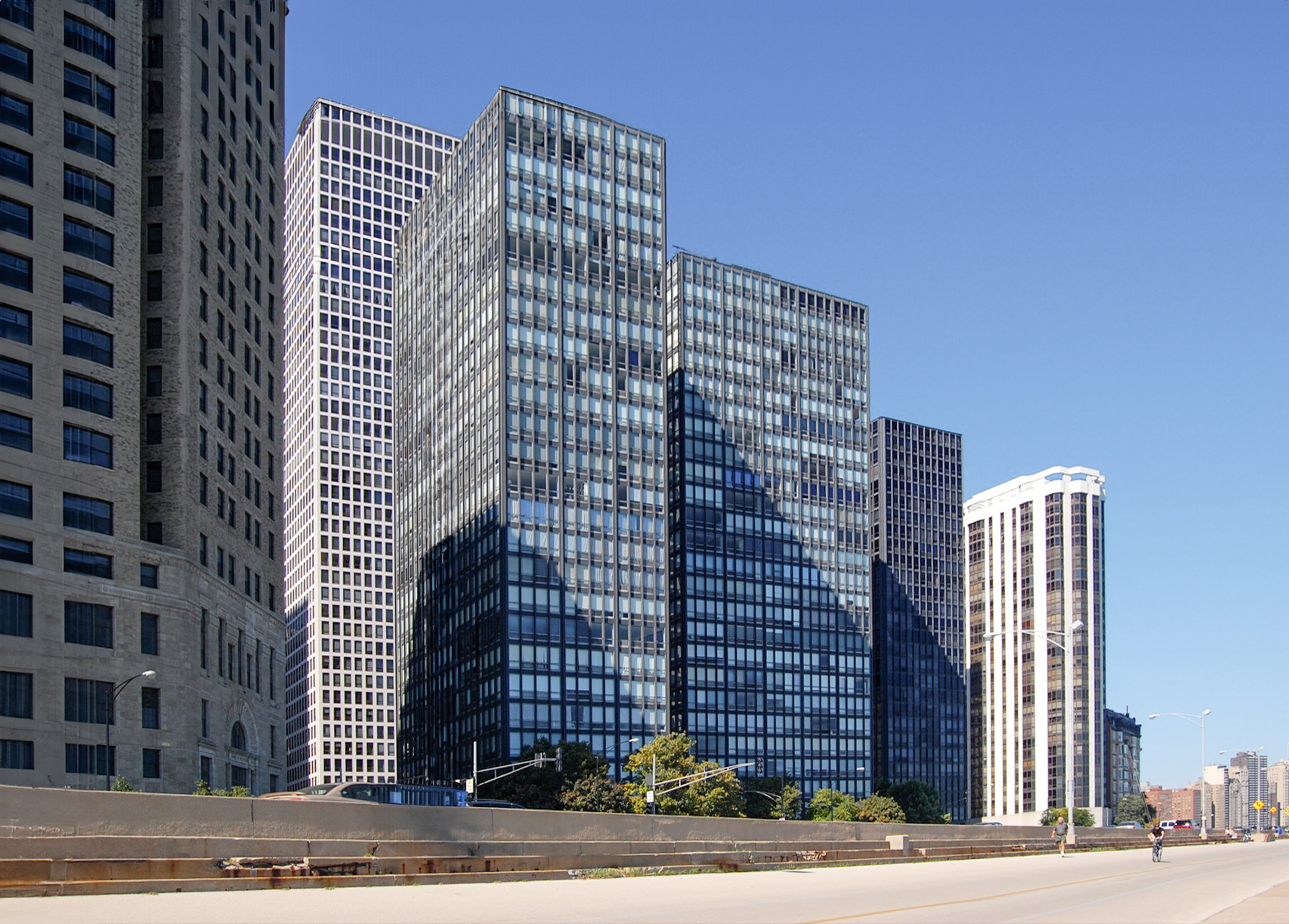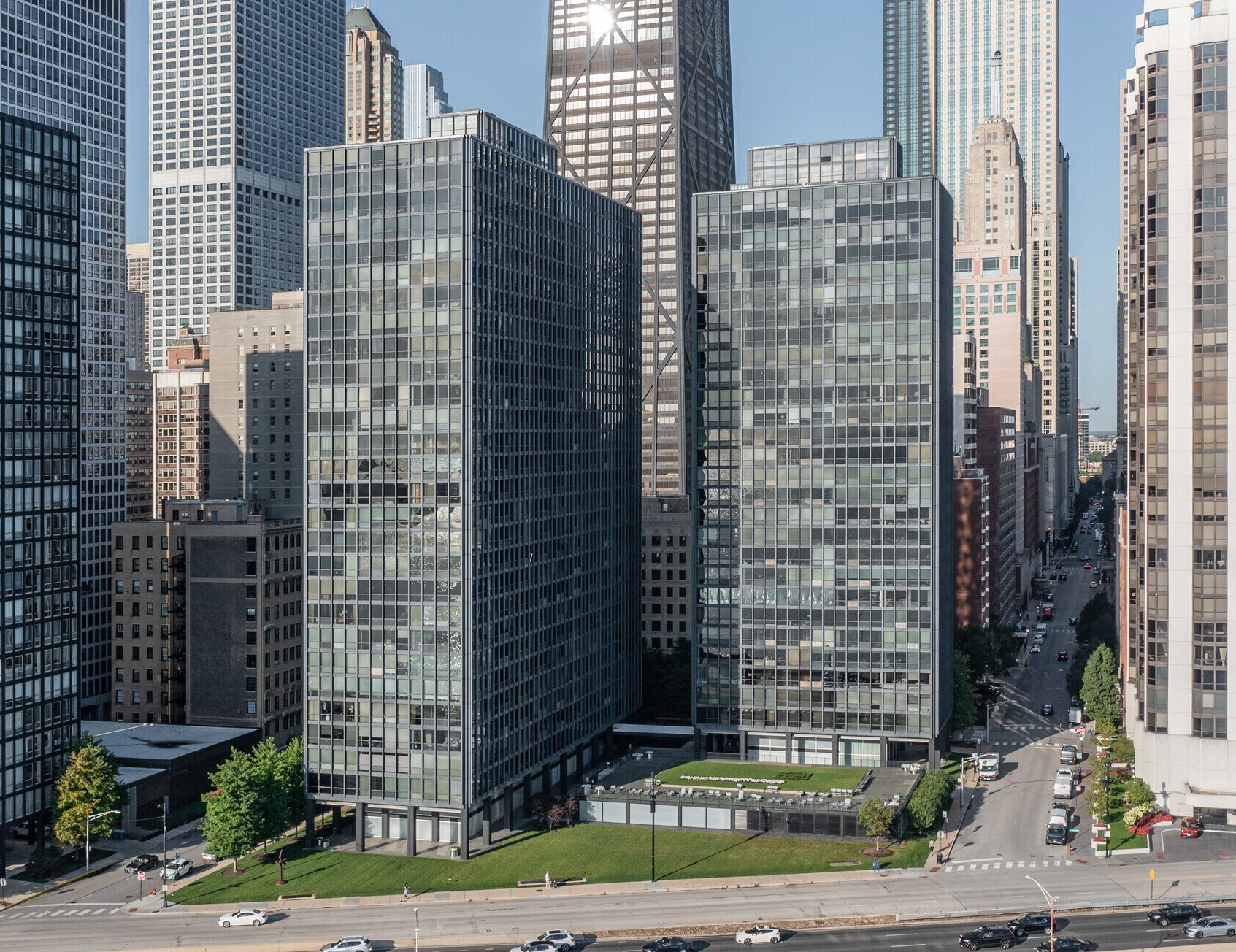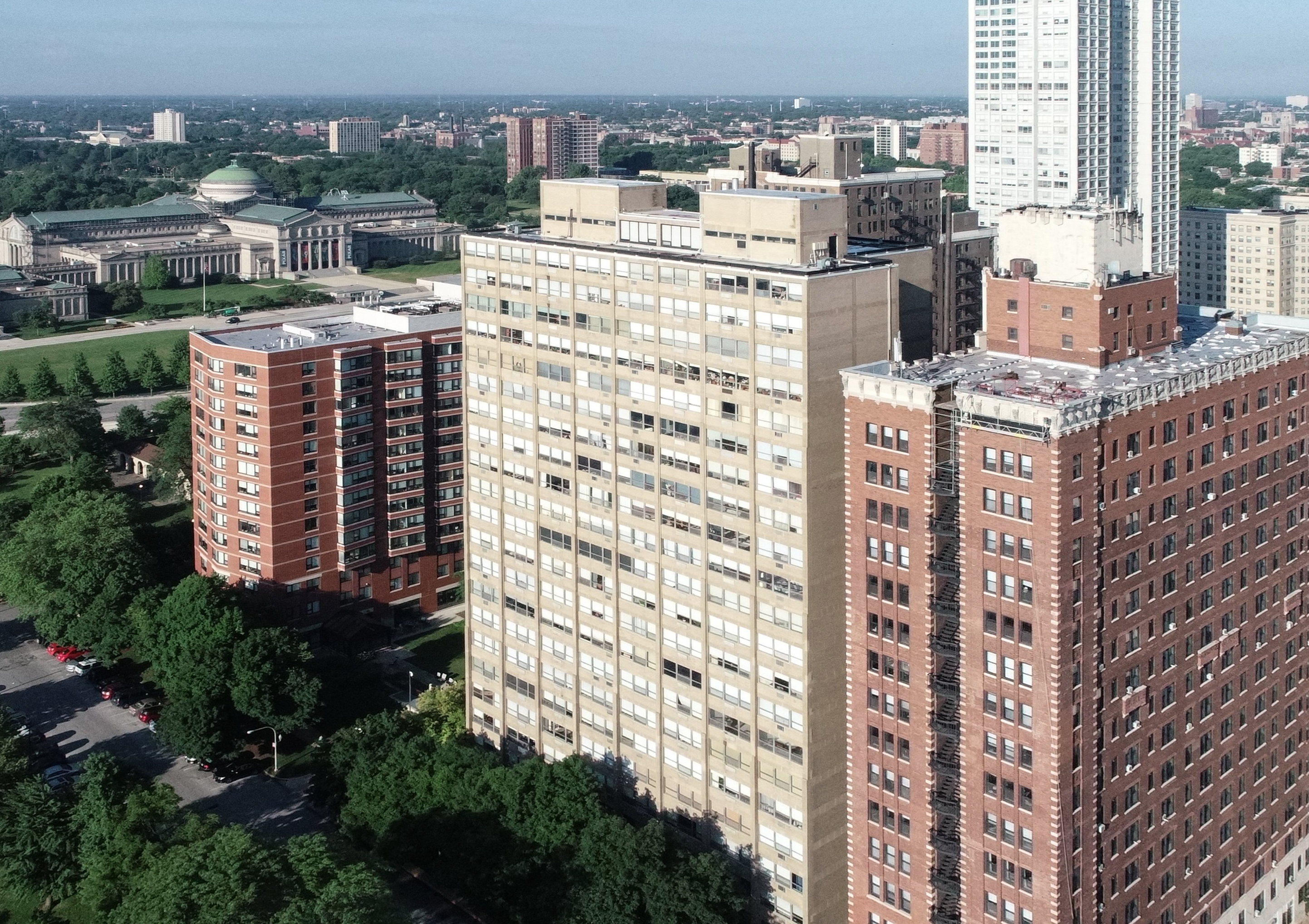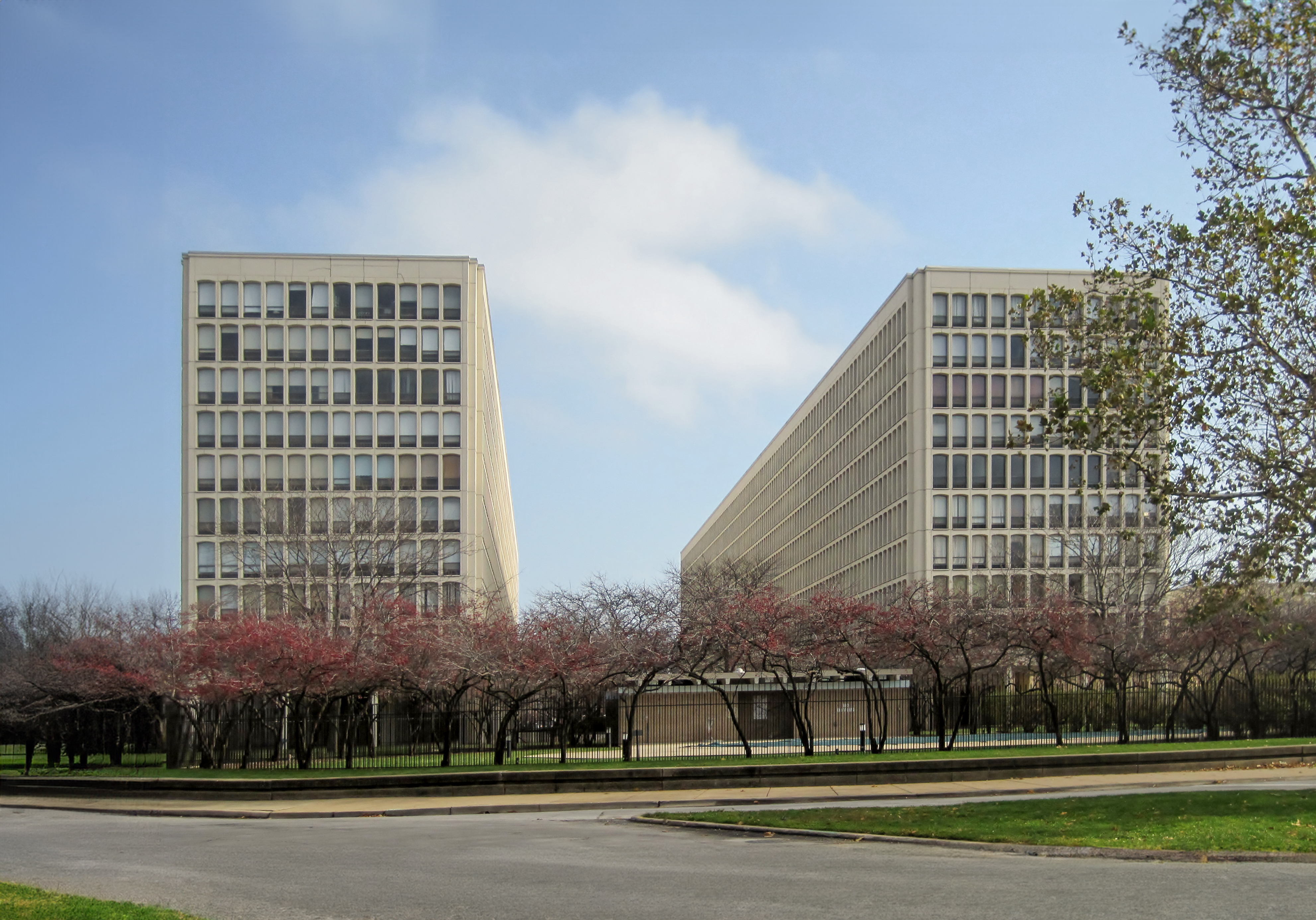The Aon Center is an International Style skyscraper designed by Edward Durell Stone, in association with Perkins & Will Partnership, and built between 1970 and 1973, for a reported $120 million dollars, in Chicago, IL.
Aon Center is not the only name you might know this building by though. It is common for companies to want to attach their names to iconic buildings when they move in, or for the general public to come up with nicknames, and this one is no exception. The Aon Center is also known, or has been known as, Standard Oil Building, or Amoco Building.
Its precise street address is 200 E.Randolph Street, Chicago, IL. You can also find it on the map here.
Although this building is unrelated to the Twin Towers in NYC, many have highlighted the similarities between both projects. The structure type of choice in both cases was a "framed tube-in-tube", which naturally creates narrow windows and, depending on the materials used, the distinctive vertical stripes which both projects share.
The building underwent a major restoration between 1990 and 1992.
